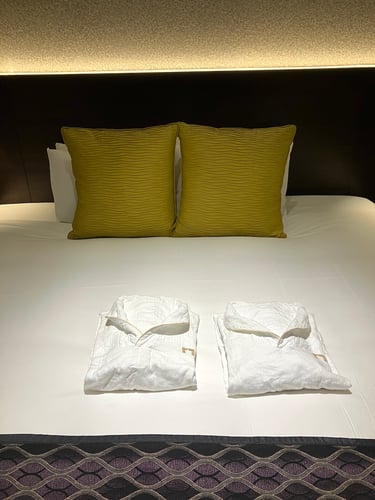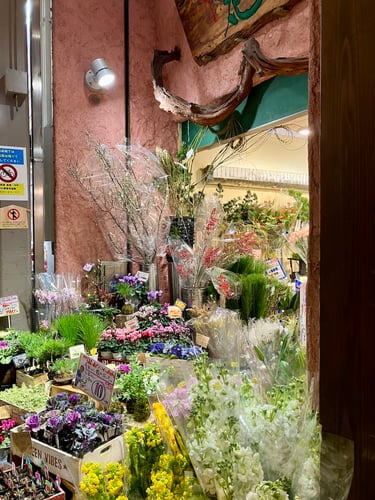
Kyoto • 京都 • きょうと
So you're planning a trip to Kyoto? Dive into our comprehensive Kyoto travel guide covering everything you need to know about the city and the must-do experiences awaiting you.

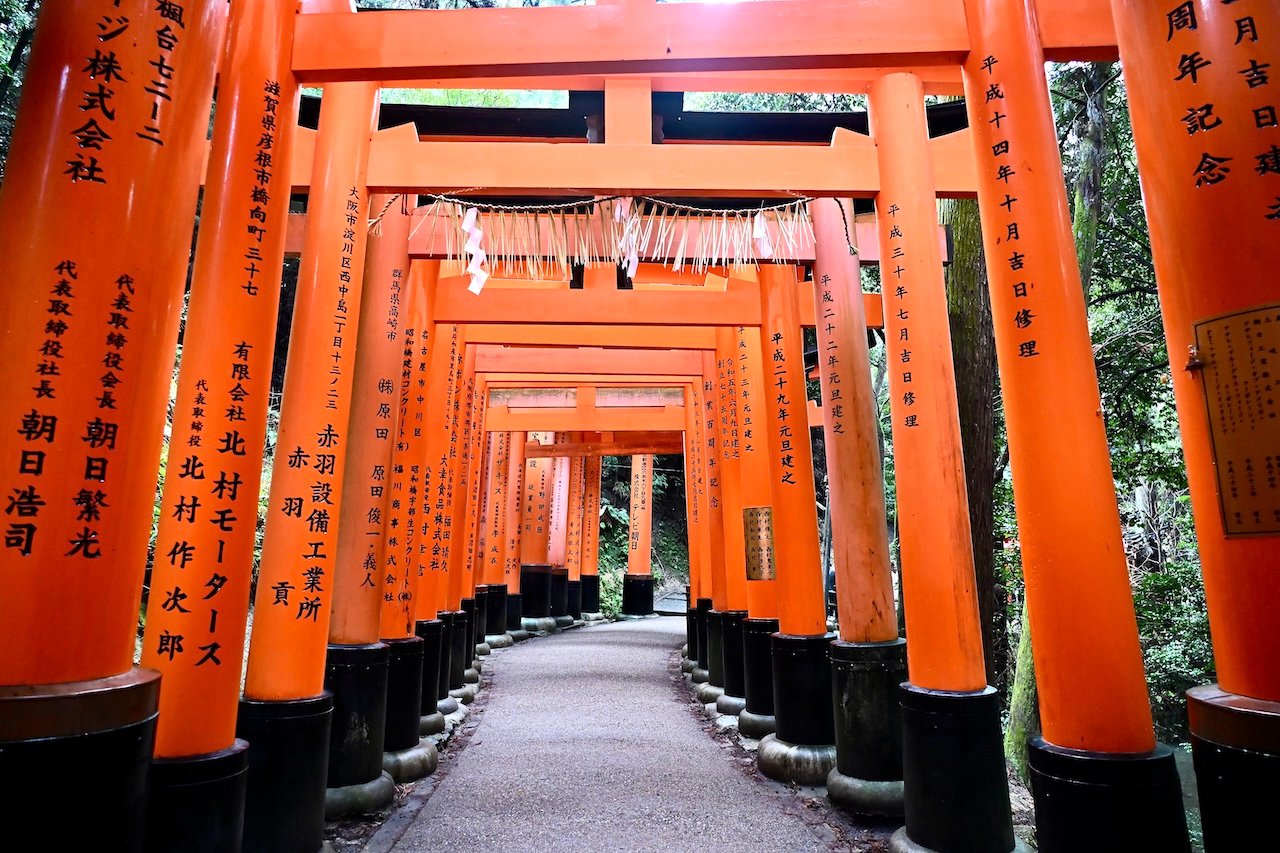
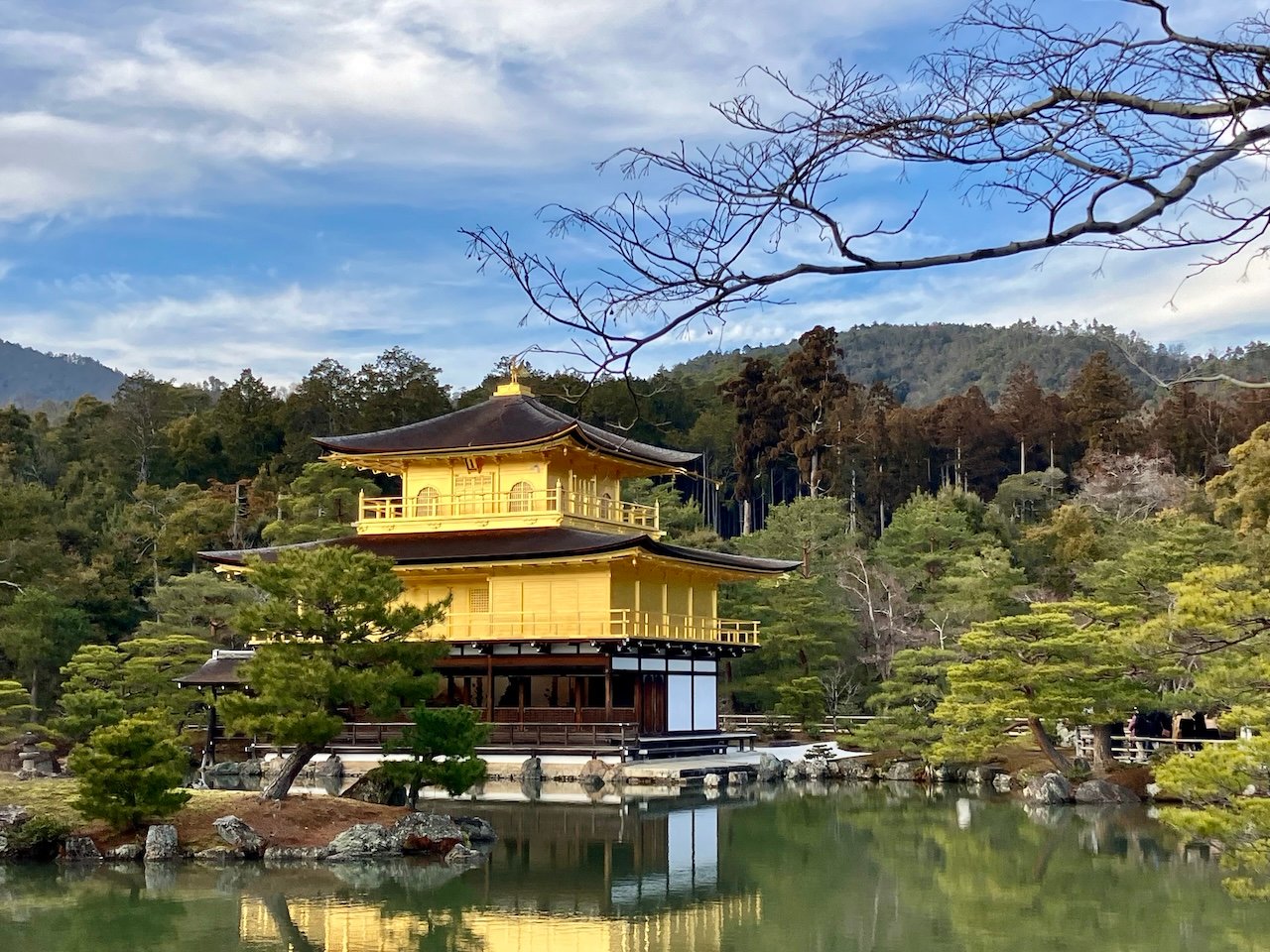
Kyoto Travel Guide
An Introduction
Kyoto (京都 or きょうと), once the imperial capital of Japan, stands as a captivating city steeped in history and tradition. Renowned for its well-preserved temples, shrines, and classic wooden architecture, Kyoto offers a glimpse into Japan's rich cultural heritage. The city served as the country's capital for over a thousand years, from 794 to 1868, and its historical significance is evident in the array of UNESCO World Heritage Sites scattered across its landscape.
Wandering through Kyoto's historic districts, such as Gion and Higashiyama, transports visitors to a bygone era. These neighborhoods boast preserved machiya (traditional wooden townhouses), stone-paved streets, and quaint teahouses where geisha once entertained. Kyoto's iconic Fushimi Inari Shrine, with its thousands of vermillion torii gates leading to the mountaintop, and the serene Kinkaku-ji (Golden Pavilion) showcase the city's architectural marvels.
Beyond its historical allure, Kyoto embraces modernity with vibrant markets, contemporary art spaces, and a thriving culinary scene. Whether participating in a traditional tea ceremony, exploring bamboo groves, or savoring kaiseki cuisine, Kyoto's charm lies in its harmonious blend of ancient traditions and contemporary delights.
- In Japanese, Kyoto translates to "Capital City" and reflects its role as the former imperial capital of Japan.
- Kyoto was once the largest city in Japan. Today, Kyoto has a population of approximately 1.5 million people.
- There are some 2,000 temples and shrines in Kyoto. Kyoto is often referred to as the "City of a Thousand Temples" due to its abundance of Buddhist temples, Shinto shrines, and other historical and cultural sites.
- Kyoto is renowned for its traditional festivals, including Gion Matsuri. Held in July, Gion Matsuri is one of Japan's most famous festivals, is the festival of the Yasaka Shrine. It features a grand procession of traditional floats, known as "yamaboko," adorned with intricate tapestries and craftsmanship.
Kyoto Travel Guide: Quick Tips
Kyoto Travel Guide: Can't-Miss Attractions
Explore Kyoto's cultural treasures, from the historic wonders of Kinkaku-ji and the serene Fushimi Inari Shrine to the traditional ambiance of Gion's historic district. Experience the enchanting Arashiyama Bamboo Grove and immerse yourself in the city's rich cultural history with visits to vibrant markets, traditional tea houses, and more. Kyoto's landmarks collectively weave a tale of its historical significance and enduring charm.
We've highlighted all the attractions we visited and adored with the universal symbol of love, ♡.
- Kinkaku-ji Temple: ♡ Kinkaku-ji, or the Golden Pavilion, is a Buddhist temple in Kyoto famous for its stunning golden exterior covered in gold leaf. Originally built as a shogun's retirement villa in 1397, the current structure dates back to 1955 after a reconstruction. The temple's unique architectural styles, beautiful gardens, and UNESCO World Heritage status make it a symbol of Kyoto's cultural richness and a popular destination for visitors.
- Fushimi Inari-taisha Shrine: ♡ Fushimi Inari-taisha Shrine is renowned for its iconic torii gate pathway leading to the sacred Mount Inari. The shrine is dedicated to Inari, the Shinto god of rice and prosperity, and features thousands of vibrant red torii gates along a forested trail.
- Arashiyama Bamboo Grove: Arashiyama Bamboo Grove is a mesmerizing bamboo forest in the Arashiyama district of Kyoto. Visitors are enchanted by the towering bamboo stalks that create a unique and peaceful atmosphere. The grove is particularly popular for its picturesque pathways, providing a serene environment for a stroll.
- Explore Gion: Gion is a historic and picturesque neighborhood in Kyoto, renowned for its traditional wooden machiya houses, narrow streets, and preservation of the city's historic charm. It is especially famous for being a geisha district, and visitors can catch glimpses of geisha and maiko (apprentice geisha) in their distinctive attire. Gion is dotted with teahouses, restaurants, and shops, creating an ambiance that transports visitors to the traditional world of old Kyoto. The Hanami-koji street is a central thoroughfare, lined with traditional establishments, making Gion a must-visit for those seeking an authentic Kyoto experience.
- Nishiki Market: ♡ Nishiki Market, often referred to as "Kyoto's Kitchen," is a bustling and historic food market in the heart of Kyoto. Spanning five blocks, the market is renowned for its diverse array of stalls and shops offering fresh produce, Kyoto specialties, and traditional Japanese snacks. Visitors can explore a wide range of culinary delights, from pickles and fresh seafood to sweets and Kyoto's famous matcha products.
- Nijō Castle: Nijō Castle is a historic fortress with significant cultural and architectural importance. Built in the early 17th century, the castle is known for its "nightingale floors" that chirp when walked upon, providing a form of audible security. The palace complex features beautiful gardens, intricate wall paintings, and the Ninomaru Palace, showcasing exquisite examples of Japanese feudal architecture. Nijō Castle is a UNESCO World Heritage Site and offers visitors a glimpse into Japan's feudal history and artistic achievements.
- Kiyomizu-dera Temple: ♡ Kiyomizu-dera is a historic Buddhist temple in Kyoto, Japan, known for its wooden terrace that offers panoramic views of the city. The temple, established in 778, is a UNESCO World Heritage Site and is particularly famous for its architectural design and the scenic surroundings of the Higashiyama District.

Kyoto Travel Guide: Landmarks
The most iconic landmarks in Kyoto are without a doubt its temples and shrines, particularly Kinkaku-ji Temple (Golden Pavilion), Fushimi Inari-taisha Shrine with it's endless rows of Torii gates, and Kiyomizu-dera Temple with its massive wooden terrace. More information about these temples and shrines can be found under the Temples & Shrines tab. In addition to its renowned temples and shrines, Kyoto boasts a variety of other landmarks waiting to be explored.
Nijō Castle
Nijō Castle stands as a remarkable testament to Japan's feudal history and architectural prowess, making it a must-visit destination for travelers seeking a deeper understanding of the country's heritage. Built in the early 17th century, the castle boasts unique features such as "nightingale floors" that chirp when walked upon, providing an audible security measure. The Ninomaru Palace within the complex showcases exquisite examples of Japanese feudal architecture, adorned with intricate wall paintings and elegant gardens.
Visitors to Nijō Castle have the opportunity to step back in time and explore the corridors and chambers that once hosted shoguns and dignitaries. The castle's historical significance, coupled with its beautiful surroundings and cultural richness, makes it a captivating destination. The serene gardens surrounding the palace add to the overall experience, providing a tranquil setting for reflection and appreciation of Japan's rich cultural legacy.
Kyoto Imperial Palace
The Kyoto Imperial Palace, situated in the heart of Kyoto, was the former residence of the Imperial family until the capital moved to Tokyo. Surrounded by picturesque gardens and traditional architecture, the palace complex includes multiple buildings, halls, and courtyards, offering visitors a glimpse into Japan's imperial history. While the interior is generally not open to the public, the expansive Kyoto Imperial Palace Park and its beautiful surroundings make it a serene and historically significant site for those exploring Kyoto's cultural heritage. Unlike the Imperial Palace in Tokyo, the Imperial Palace in Kyoto is open to walk-in visitors. Advance reservations or tickets are not required.
Kyoto Tower
Kyoto Tower is a prominent landmark and observation tower located in the heart of Kyoto City, near Kyoto Station. Standing at 430 feet (131 meters) tall, it offers panoramic views of the city and its surroundings from its observation deck, making it a popular attraction for tourists. The tower also houses shops, restaurants, and a hotel. While not as historically significant like other landmarks in Kyoto, Kyoto Tower offers visitors a unique perspective of the city's modern skyline and is often included on itineraries for its stunning views.
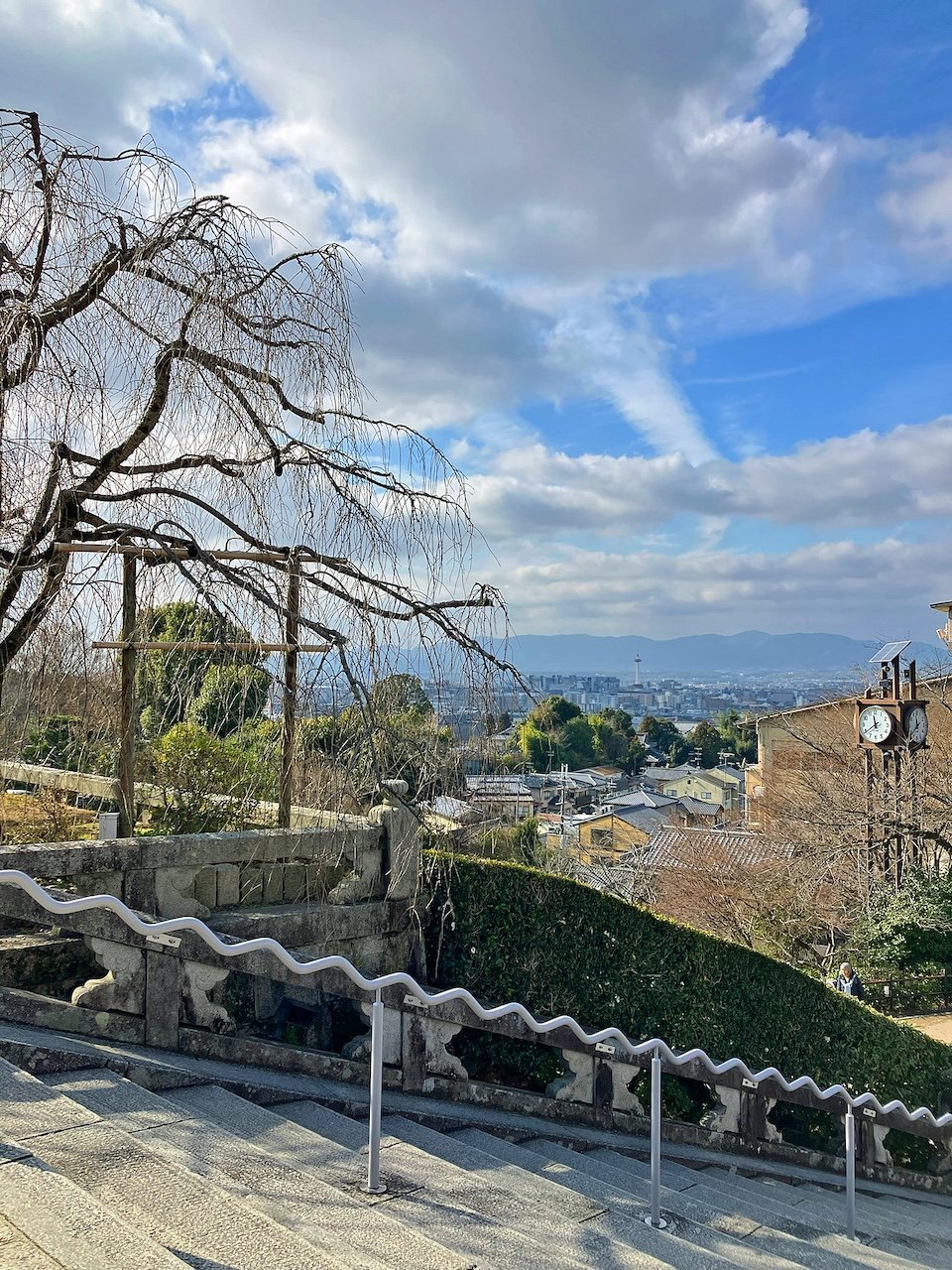
Kyoto Travel Guide: Top Museums
Kyoto is home to a diverse range of museums, offering cultural, historical, and artistic experiences. The museum closing days in Kyoto can vary. While some museums do choose to close on Mondays, others may have different scheduled closure days or may remain open seven days a week. It's essential to check the specific closing days for each museum you plan to visit, as this information can be found on their official websites. Many museums in Kyoto also close on certain holidays. Here are some notable museums in the city:
For the art aficionado:
- Kyoto National Museum: The Kyoto National Museum is a prominent cultural institution, dedicated to preserving and showcasing Japan's rich cultural heritage. Established in 1897, the museum features an extensive collection of traditional and contemporary art, including ceramics, paintings, sculptures, and artifacts, providing visitors with a comprehensive insight into Japan's artistic legacy.
- Museum of Modern Art Kyoto (MoMAK): The Museum of Modern Art Kyoto is a contemporary art museum showcasing a diverse collection of modern and contemporary Japanese art. Located in the Okazaki area, the museum features rotating exhibitions of paintings, sculptures, and multimedia artworks, providing a platform for both established and emerging artists.
For the history lover:
- Museum of Kyoto: The Museum of Kyoto is a cultural institution that offers a comprehensive exploration of Kyoto's history, art, and traditions. Situated in a modern building near Heian Shrine, the museum features a diverse range of exhibits, including artifacts, paintings, and displays depicting the city's evolution over the centuries. Visitors can gain valuable insights into Kyoto's cultural richness and historical significance, making it an essential stop for those seeking a deeper understanding of the city's heritage and contributions to Japanese culture.
- Kyoto Samurai & Ninja Museum: The Samurai and Ninja Museum is a unique attraction that offers visitors the chance to delve into Japan's warrior history. Located in the heart of Kyoto, the museum provides interactive exhibits on samurai armor, weapons, and the art of the ninja. With live demonstrations and hands-on experiences, it offers a captivating journey into the world of these iconic Japanese figures, making it an engaging destination for those fascinated by martial arts and historical warfare.
Kyoto Travel Guide: Popular Temples & Shrines
Since Kyoto is quite literally known as the "City of a Thousand Temples", it's easy to feel overwhelmed by all of the temples and shrines to visit. We've curated a list of some of the most popular ones for you to explore in the city.
Kinkaku-ji Temple (Golden Pavilion) ♡
Kinkaku-ji, commonly known as the Golden Pavilion, is a beautiful Buddhist temple located in northern Kyoto, Japan. The temple is renowned for its stunning exterior covered in gold leaf, creating a mesmerizing reflection on the pond that surrounds it. Originally built in 1397 as a retirement villa for the shogun Ashikaga Yoshimitsu, it was later converted into a temple upon his death.
Surrounded by meticulously landscaped gardens, Kinkaku-ji is a harmonious blend of natural beauty and architectural splendor. The reflective pond, known as Kyoko-chi, enhances the temple's visual impact, especially during the cherry blossom season in spring and the vibrant autumn foliage season.
Despite being destroyed multiple times over the centuries, including a fire in 1950, Kinkaku-ji has been meticulously restored to preserve its cultural and historical significance. It stands today as a UNESCO World Heritage Site and a symbol of Kyoto's rich heritage and elegance.
Please note that Kinkaku-ji is most easily accessed by city bus as there is not a local train or metro station nearby.
Since Kinkaku-ji is one of the most iconic temples to visit in Japan, it is often crowded. We recommend visiting an hour before closing to spare yourself from the large crowds. Just keep in mind that the last admission is 30-minutes before closing. For information regarding opening hours, admission costs, and the city bus lines that stop nearby be sure to check the temple's website.
Fushimi Inari-taisha Shrine ♡
Fushimi Inari-taisha is a revered Shinto shrine located in southern Kyoto known for its iconic Torii gate pathway, vibrant red structures, and dedication to Inari, the Shinto god of rice, fertility, and prosperity. The shrine, founded in the 8th century, is one of Kyoto's most visited and photographed landmarks.
The defining feature of Fushimi Inari-taisha is the thousands of Torii gates forming a striking pathway that leads up the wooded slopes of Mount Inari. The gates are donated by individuals and businesses, bearing inscriptions expressing gratitude for prosperity and success.
Visitors ascend the mountain through a network of trails lined with Torii gates, passing by sub-shrines and stone fox statues, messengers of Inari. The main shrine complex at the summit offers panoramic views of Kyoto.
Fushimi Inari-taisha Shrine tends to draw large crowds, but as you walk further into the seemingly endless pathway of Torii gates, the crowds gradually dissipate. While many visitors only venture partway, there is a serene scenic overlook at the mountain's summit. The full hike takes about 2-3 hours.
Fushimi Inari-taisha Shrine can be easily accessed from the JR Inari Station.
Kiyomizu-dera Temple ♡
Kiyomizu-dera Temple, officially Otowa-san Kiyomizu-dera, is an iconic Buddhist temple situated on the eastern hills of Kyoto in the historic and charming Higashiyama neighborhood. Founded in 778, the temple is associated with the Hosso sect of Buddhism and is renowned for its wooden terrace that offers panoramic views of Kyoto and the surrounding natural scenery.
Key features of Kiyomizu-dera include the Kiyomizu Stage, a massive wooden terrace supported by wooden pillars, and the Main Hall.
Kiyomizu-dera is especially popular during the cherry blossom season in spring and the vibrant autumn foliage season, offering breathtaking views of Kyoto's landscapes. The temple's historical significance, architectural beauty, and scenic setting make it a UNESCO World Heritage Site and a must-visit destination for those exploring Kyoto.
Keep in mind that Kiyomizu-dera is at least a 10 minute walk, uphill, from the nearest station or bus stop. For information regarding opening times and access via public transportation, visit the temple's website.
Sanjusangendo Temple
Sanjusangendo, officially known as Rengeo-in, is a Buddhist temple located in the Higashiyama district neighborhood. The temple's name, Sanjusangendo, translates to "Hall with Thirty-Three Spaces Between Columns," referring to the long wooden hall that houses 1,001 life-sized statues of the Buddhist deity Kannon.
The main hall, constructed in the 12th century, is renowned for its impressive architectural design and the stunning collection of Kannon statues. Each statue is unique, and they collectively represent the Buddhist idea of compassion. The temple is a designated national treasure and a popular cultural and religious site in Kyoto.
In addition to the main hall, Sanjusangendo is surrounded by beautiful gardens, enhancing the overall serene atmosphere of the temple grounds. Visitors are captivated by the intricate details of the statues and the spiritual ambiance that permeates the hall, making it a significant destination for those interested in Japanese Buddhist art and history.
Eikan-dō Zenrinji Temple
Eikan-dō Zenrin-ji Temple, officially known as Zenrin-ji, is a Buddhist temple. The temple is located south of the Philosopher's Path in central Higashiyama. Founded in the 9th century, the temple is renowned for its serene atmosphere, beautiful gardens, and the stunning autumn foliage that graces its grounds. Eikan-dō is particularly famous for its Amida Buddha statue, which is considered a designated national treasure.
The temple complex features various halls, gardens, and walking paths, creating a tranquil environment for reflection and appreciation of nature. Eikan-dō is especially popular during the autumn season when the vibrant colors of the maple trees transform the temple grounds into a breathtaking display of red and gold. The temple's rich history, cultural significance, and natural beauty make it a cherished destination for visitors exploring Kyoto.
Ginkaku-ji Temple (Silver Pavilion)
Ginkaku-ji, also known as the Silver Pavilion, is a Buddhist temple located in the eastern part of Kyoto. Built during the late 15th century, the temple is renowned for its elegant design and serene surroundings. Despite its name, the Silver Pavilion was never actually covered in silver leaf as initially intended.
Ginkaku-ji is often referred to as the sister or twin of Kinkaku-ji, the Golden Pavilion. Both temples showcase distinct architectural styles and are situated in scenic settings with meticulously landscaped gardens.
Surrounded by gardens and a reflective pond, Ginkaku-ji offers a peaceful retreat for visitors. The moss-covered grounds, traditional tea houses, and the iconic Kannon-den, or main hall, contribute to the temple's aesthetic appeal. Ginkaku-ji is a UNESCO World Heritage Site and a cultural treasure, making it a popular destination for those seeking a contemplative and visually stunning experience in Kyoto.
Ginkaku-ji is situated along the Philosopher's Path, a picturesque walking trail in Kyoto. It follows a canal and is named after Nishida Kitaro, a philosopher who used to stroll along it for meditation.
Ginkaku-ji is most easily accessed by city bus. For bus routes, admission costs, and opening hours visit the Ginkaku-ji website.
Chion-in Temple
Chion-in is a significant Buddhist temple located in Kyoto. Established in the 13th century, it is the main temple of the Jodo sect of Japanese Buddhism and is renowned for its historical importance and grand architecture.
The temple complex features several impressive structures, including the vast main hall, the Sanmon gate (considered one of the largest wooden gates in Japan), and the Miedo Hall. Chion-in is particularly associated with the founder of the Jodo sect, Honen, and his disciple, Shinran. The temple has played a pivotal role in the development of Pure Land Buddhism in Japan.
Visitors to Chion-in are awed by its expansive grounds, traditional buildings, and the solemnity of the religious ceremonies held there. The temple is also known for its annual New Year's bell ringing ceremony, where participants ring the massive temple bell to usher in the new year.
Yasaka Shrine (Gion Shrine)
Yasaka Shrine, also known as Gion Shrine, is a prominent Shinto shrine located in the Gion district of Kyoto. It is known for its iconic vermilion-colored main gate and lanterns, which create a striking sight, particularly during festivals. Yasaka Shrine is closely associated with the Gion Matsuri, one of Japan's most famous festivals held annually in July. Visitors can explore the shrine grounds, participate in traditional rituals, and experience the vibrant atmosphere of this historic site nestled amidst the bustling streets of Kyoto.
Top Etiquette Tips for Visiting Shrines & Temples in Japan >
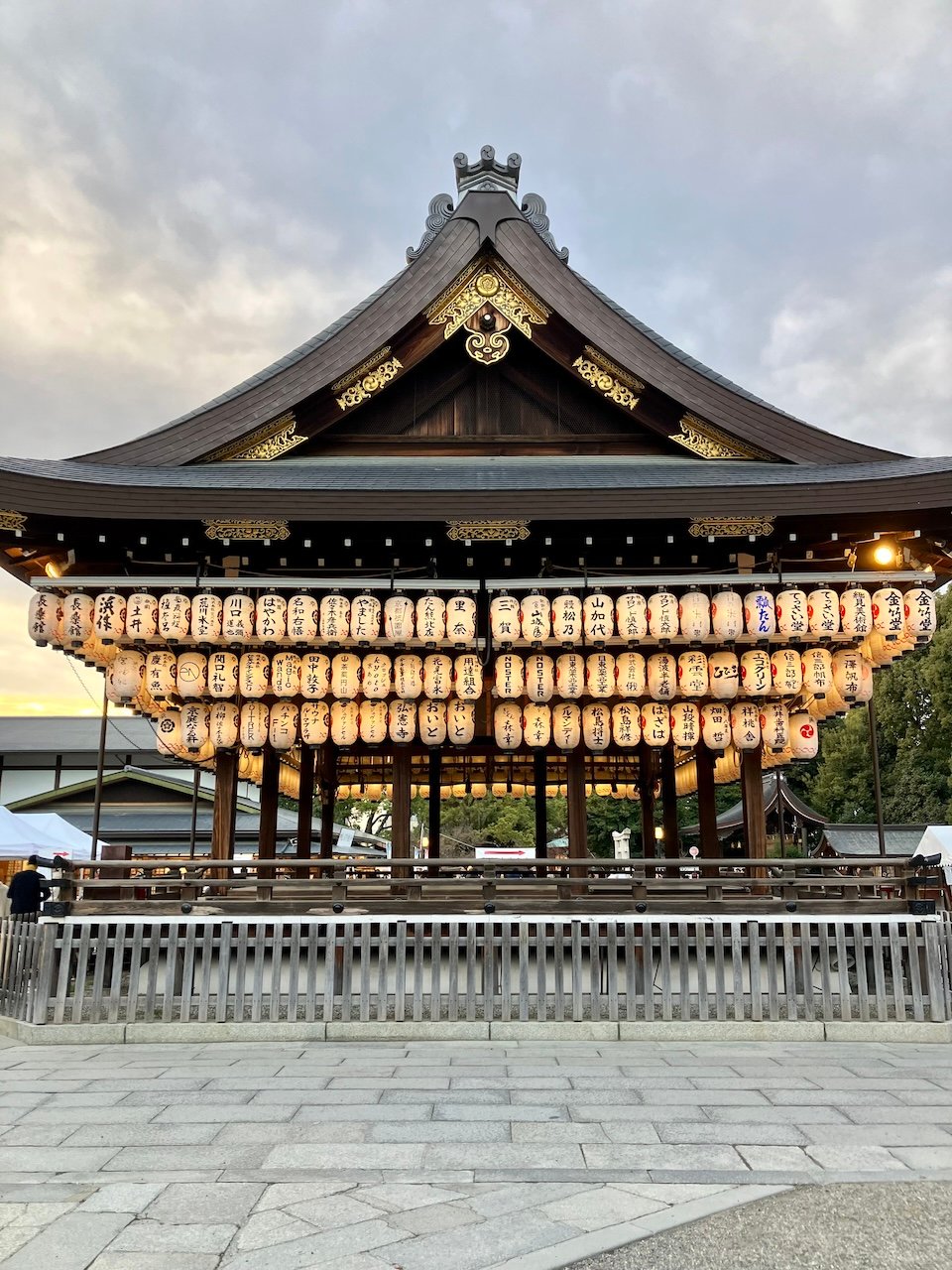
Kyoto Travel Guide: Gardens & Parks
Kyoto, a city celebrated for its temples, shrines, and enchanting gardens, beckons with serene green spaces, offering a peaceful retreat from the lively streets of Gion. Venture into the iconic Arashiyama Bamboo Grove, adding a touch of mystique to Kyoto's natural allure.
Maruyama-koen Park
Maruyama-koen Park is a picturesque public park in the Higashiyama District of Kyoto. Known for its scenic beauty, especially during cherry blossom season, Maruyama Park is one of Kyoto's prime hanami (cherry blossom viewing) spots. The park features a large central pond surrounded by walking paths, traditional tea houses, and a variety of flora, creating a serene environment for visitors to enjoy nature.
At the heart of the park stands the massive weeping cherry tree, known as the "Shidarezakura" or "Weeping Cherry of Maruyama," which becomes a focal point of admiration when in full bloom during spring. The park attracts locals and tourists alike, offering a peaceful escape and a vibrant atmosphere during the cherry blossom season.
Kyoto Gyoen (Kyoto Imperial Palace Park)
Kyoto Gyoen, also known as Kyoto Imperial Palace Park, is a vast green space surrounding the Kyoto Imperial Palace. The park serves as the outer garden of the imperial residence and offers a peaceful retreat in the midst of the city. Visitors can explore the meticulously landscaped gardens, stroll along scenic paths, and enjoy the serene atmosphere that complements the historical significance of the imperial grounds.
The park features a harmonious blend of traditional Japanese and Western-style gardens, showcasing seasonal flowers, ponds, and architectural elements. Notable attractions within Kyoto Gyoen include the iconic Seisho-tei teahouse, Suwa-no-chaya teahouse, and the Kyocan-tei, a villa with a beautiful garden.
Kyoto Botanical Gardens
The Kyoto Botanical Gardens stand as Japan's oldest and one of the most prestigious botanical gardens. Spanning approximately 240 acres, this expansive facility is dedicated to the cultivation, preservation, and study of diverse plant species from Japan and around the world. Located in the northern part of Kyoto, the gardens offer visitors a peaceful and educational environment.
Key features of the Kyoto Botanical Gardens include a wide array of themed gardens, greenhouses, and natural landscapes, each representing different plant ecosystems. Visitors can explore sections dedicated to cherry blossoms, roses, camellias, and various other flora. The conservatory houses tropical and subtropical plants, creating a vibrant and diverse botanical display.
Kamo-gawa Riverside Park
Kamo-gawa Riverside Park, situated along the banks of the Kamo River, is a scenic and popular public space known for its natural beauty and recreational opportunities. The park spans both sides of the river, offering a picturesque setting for leisurely walks, picnics, and outdoor activities.
The riverside park features tree-lined pathways, open green spaces, and charming bridges that provide stunning views of the river and the surrounding landscapes.
During the cherry blossom season in spring, the park becomes a prime hanami (cherry blossom viewing) spot, with the riverside adorned with blooming sakura trees. Additionally, the park hosts various cultural events and festivals throughout the year.
Arashiyama Bamboo Grove
The Arashiyama Bamboo Grove is a captivating natural wonder located in the scenic Arashiyama district. Renowned for its enchanting ambiance, this bamboo forest immerses visitors in a world of towering bamboo stalks that stretch towards the sky, creating a serene and magical atmosphere. The grove's allure is heightened by the intricate patterns formed by the bamboo, casting enchanting shadows and captivating all who venture through.
One of the most remarkable features of the Arashiyama Bamboo Grove is its picturesque pathways that wind through the towering bamboo, allowing visitors to experience the beauty up close. The sunlight filtering through the bamboo leaves creates a play of light and shadow, enhancing the tranquility of the surroundings. Whether for a leisurely stroll or a moment of reflection, the bamboo grove offers a unique and peaceful escape, making it a must-visit destination in Kyoto.
The Bamboo Grove is open 24 hours a day, 7 days a week. Walking the entire path typically takes at least an hour at a brisk pace, but for a more leisurely experience, plan for 2-3 hours.
Kyoto's Best Gardens >
Kyoto's Best Green Spaces >
Cherry Blossoms in Kyoto >
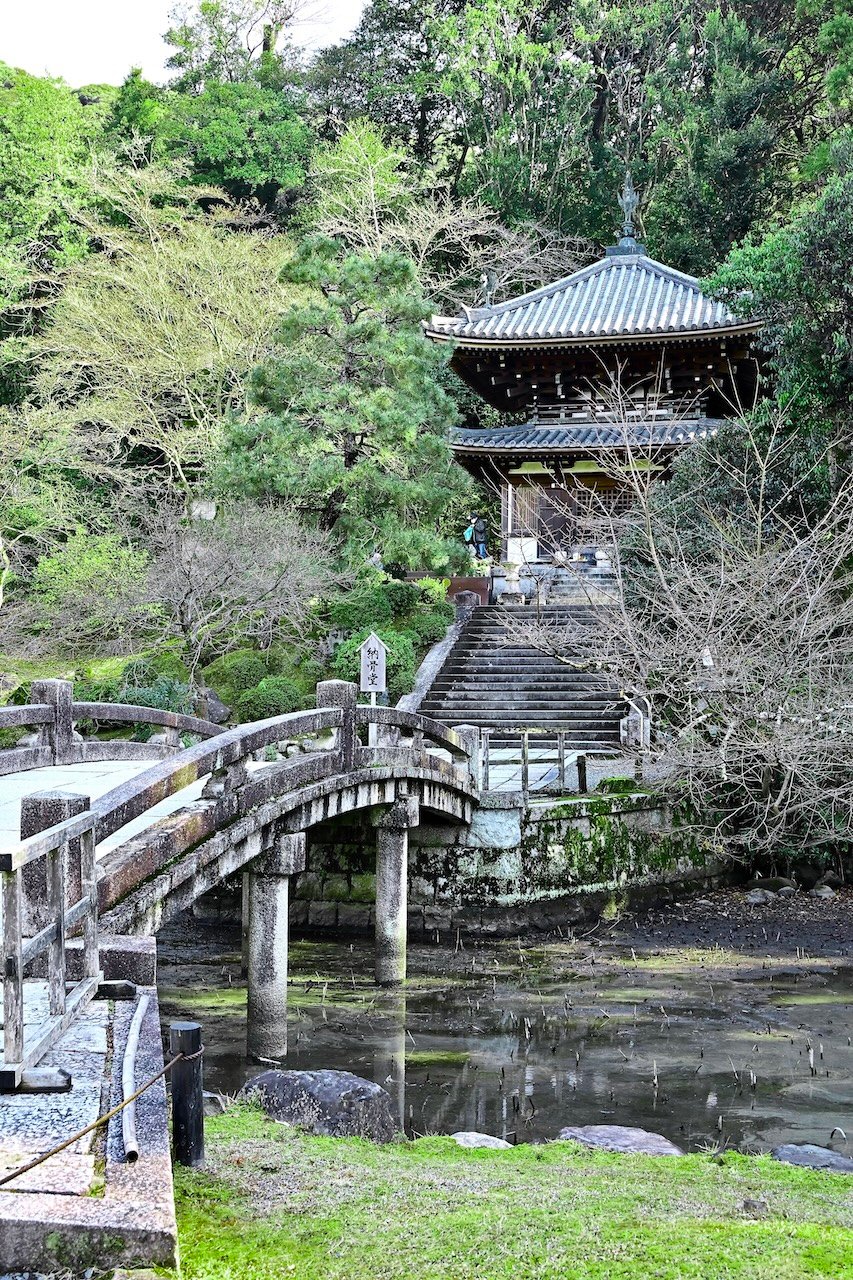
Kyoto Travel Guide: A Taste of Kyoto
Kyoto boasts a rich and diverse culinary landscape, offering a gastronomic journey steeped in tradition and innovation. From classic dishes and savory street foods to hidden gems in historic alleyways, the city provides a spectrum of dining experiences. Discover the art of tea ceremonies, delve into authentic Kyoto cuisine at local izakayas, or explore bustling markets for seasonal bites.
Nishiki Market ♡
Nishiki Market, also known as Kyoto's Kitchen, is a bustling and historic food market located in the heart of Kyoto. With a history spanning over 400 years, this lively market is a culinary haven, showcasing a diverse array of fresh produce, Kyoto specialties, and traditional Japanese ingredients. Stroll through the narrow, covered streets and explore over a hundred shops and stalls offering everything from fresh seafood, pickles, and spices to local sweets and street food delicacies.
Nishiki Market was our favorite place to eat in Kyoto with such an assortment of stalls and vendors selling everything from flowers and spices, to sushi, gyozas, sake, and more. Nishiki Market is a popular spot for lunch as most vendors are closed by dinnertime. However, there are still plenty of eateries inside (and along the outskirts) of the market should you want to venture by for dinner.
Speciality Foods:
Embark on a gastronomic journey through Kyoto, savoring its distinctive culinary delights, from the refined elegance of kaiseki to the comforting warmth of yudofu and the sweetness of matcha-infused treats.
- Nishin Soba - Nishin Soba is a Kyoto delicacy featuring soba noodles topped with simmered herring, a local specialty known as "nishin." The sweet and savory flavor of the herring complements the buckwheat noodles.
- Kyozushi (Kyoto-Sushi) - Kyozushi, or Kyoto-Sushi, is a regional variation of sushi that emphasizes simplicity and elegance. Characterized by a combination of vinegared rice, fresh fish, and minimalistic toppings, Kyozushi reflects Kyoto's traditional culinary aesthetics.
- Kyo Kaiseki - Kyo Kaiseki is a traditional multi-course dining experience in Kyoto, deeply rooted in the city's culinary heritage. Kaiseki reflects the changing seasons, incorporating fresh, high-quality ingredients to create a dining experience that is both visually stunning and gastronomically rich. Each course is thoughtfully prepared to showcase the essence of Kyoto's culinary philosophy, making Kyo Kaiseki a must-try for those seeking an authentic taste of Kyoto's culinary traditions.
- Gyu Katsu - Gyu Katsu is a breaded and deep-fried beef cutlet. The dish stands out for its high-quality, tender beef, often sourced locally, and the crispy outer layer that provides a delightful contrast in textures. Often served with a side of cabbage, tonkatsu sauce, and other condiments, gyu katsu showcases Kyoto's dedication to combining traditional flavors with innovative culinary techniques.
- Yudofu - Yudofu is a traditional Kyoto dish that highlights the simplicity of tofu. This dish features silken tofu simmered in a delicate kombu (seaweed) and dashi (broth) soup.
- Matcha Sweets - Kyoto is renowned for its exquisite matcha sweets, offering a unique and refined experience for those with a sweet tooth. These treats matcha, a finely ground green tea powder known for its vibrant color and distinct flavor. From delicate matcha-flavored mochi and traditional wagashi (Japanese sweets) to matcha-infused ice cream and cakes, Kyoto's dessert scene is a haven for matcha enthusiasts.
-
Kushikatsu - Kushikatsu is a popular dish in Kyoto, consisting of skewered and deep-fried foods. The skewers typically feature a variety of ingredients such as meat, vegetables, and seafood, all coated in a light and crispy batter.
Popular Restaurants:
Kyoto is full of fantastic eateries so you really can't go wrong with anywhere you choose. In Kyoto, you also don't have to break the bank to enjoy an unforgettable meal; delicious culinary experiences can be found at every price point. While this is by no means a comprehensive list of restaurants we ate at in Kyoto, a few of the spots that we thoroughly enjoyed are listed below.- MOTOI Gyoza (Nishiki Area) - Winner of a Michelin Bib Gourmand Award, MOTOI Gyoza is an unassuming gyoza spot near Nishiki Market. The shrimp gyoza were absolutely delectable and their lunch special was a huge amount of food for a great price.
- Katsukura Tonkatsu Sanjo Main Store (Sanjo Shopping Arcade) - We found Katsukura on TripAdvisor and we're so glad we did. It proved to be a great opportunity to try tonkatsu. We also had fun blending our own dipping sauce at the table while we waited for our food. Oh, and their pork cutlets were cooked perfectly.
- A Happy Pancake (Nishiki Area) - Phenomenal soufflé-style pancakes, A Happy Pancake typically has a line, but we got lucky when we went and got seated right away. Their matcha pancakes were the best pancakes we've ever had - perfectly light and fluffy.
Michelin Guide - Kyoto Restaurants >
Where to Eat in Kyoto >
Teahouses:
Kyoto's teahouses provide an authentic glimpse into traditional Japanese tea culture, where visitors can partake in serene tea ceremonies and savor matcha in tranquil settings. For more information on tea in Kyoto, visit the Inside Kyoto website.
Cocktail Bars & Nightlife:
Kyoto's nightlife scene offers a mix of traditional izakayas, chic cocktail bars, and cozy taverns, particularly in areas like Ponto-chō and Gion. Visitors can enjoy sipping sake, sampling local craft beers, and an assortment of Japanese whiskeys while soaking in the atmospheric charm of Kyoto's historic streets. A few of the bars recommended to us are below:- Bee's Knees (Ponto-chō) - A prohibition-style speakeasy (don't worry, no password is required at the door), the Bee's Knees was our favorite cocktail bar in Kyoto! They had a variety of unique cocktails, plus an extensive list of Japanese whiskeys. There is often a wait, so we recommend going early and on a weekday.
- L'Escamoteur (Kiyamachi-dori)
- Bar Rocking Chair (Kawaramachi)
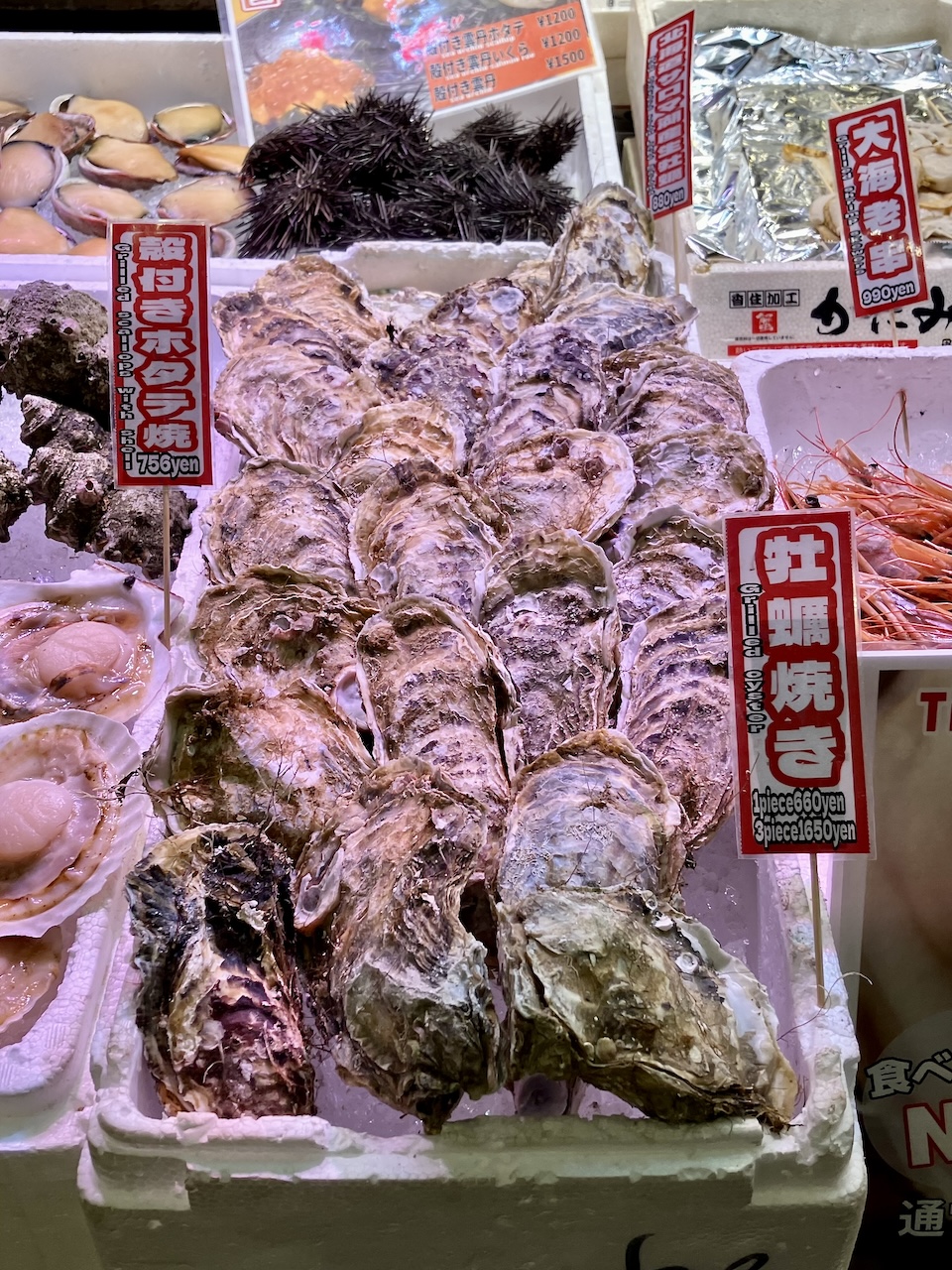
Kyoto Travel Guide: Shopping
Exploring Kyoto's shopping scene is a dynamic and diverse experience, encompassing traditional markets and upscale boutiques that showcase both local craftsmanship and international brands. Here are some highlights:
- Kyoto Station Area: Explore the vibrant Porta Shopping Mall for fashion and lifestyle brands, while the underground Porta Shopping Street provides a range of local goods and food options.
- Downtown Kyoto: Downtown Kyoto is a shopping haven with a mix of traditional and contemporary offerings.
- Shijo Street: A major shopping district with department stores, luxury boutiques, and shops selling traditional Japanese handicrafts catering to a wide range of tastes.
- Historic Nishiki Market: A must-visit for local produce, unique goods, and delicious food.
- Teramachi & Shinkyogoku Shopping Arcades: A blend of traditional and modern shops, eateries, and more. We found everything ranging from Nike sneakers to Japanese ceramics, and beautiful (and well-priced) vintage kimonos.
Kyoto-Specific Souvenirs:
Kyoto is known for its rich cultural heritage and traditional crafts, so there are plenty of unique souvenirs you can find there. Some popular ones include:
- Matcha Green Tea Products: Kyoto is renowned for its high-quality matcha (powdered green tea). You can find matcha powder, tea sets, sweets, and even skincare products made with matcha..
- Ceramics: Kyoto has a long history of pottery-making, and you can find a wide range of ceramics including tea sets, sake sets, plates, and vases. Each piece is meticulously crafted and often features intricate designs.
- Yatsuhashi: These are traditional Japanese sweets made from glutinous rice flour, sugar, and cinnamon. They come in various flavors and are often beautifully packaged, making them great gifts.
- Japanese Fans (Sensu): Kyoto is famous for its traditional folding fans, which come in various designs and materials. They make for elegant and practical souvenirs - especially if you're visiting when the weather is warm.
- Furoshiki: These are traditional Japanese wrapping cloths that can be used to wrap gifts or carry items. They come in various designs and sizes and are eco-friendly alternatives to disposable gift wrap.
-
Vintage Yukata & Kimono: While traditional garments like yukata (light cotton kimono) or kimono can be more expensive, they make for an unforgettable and authentic souvenir. If you want to save some money, consider a vintage yukata or kimono. There were a large number of shops in Kyoto selling vintage ones for good prices. You may have to dig through racks to find one to your liking or one without stains, but it can be worthwhile. We picked up a beautiful silk kimono at a shop called Wargo Antique Kimono in the Shinkyogoku Shopping Arcade. The shop sells kimonos by their weight (by the gram), so a beautiful kimono and matching obi came to just around $14 USD - a price that truly can't be beat!
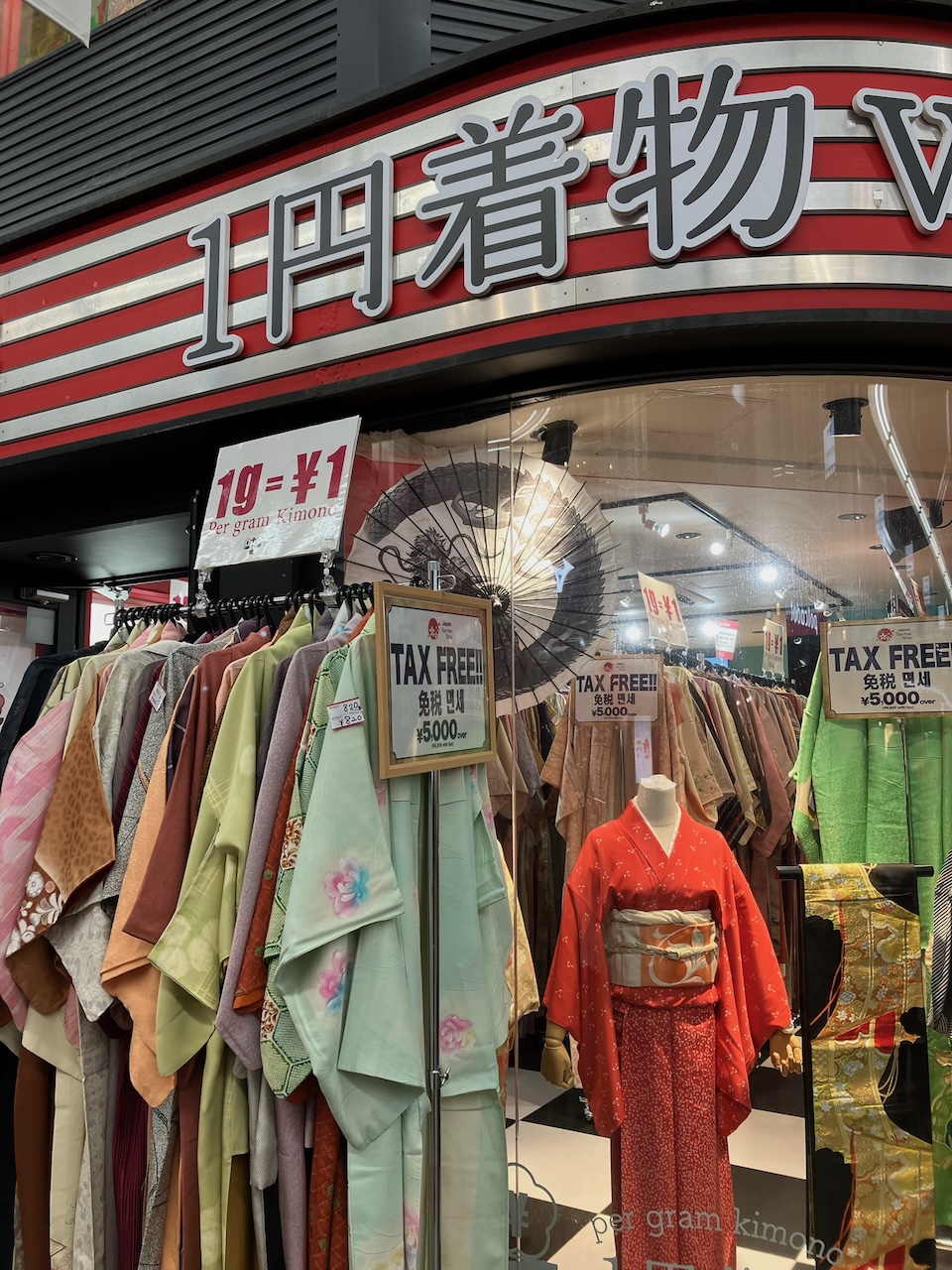
Kyoto Travel Guide: Transportation
Kyoto boasts an efficient transit network, ensuring easy city exploration. Whether utilizing local trains, subways, buses, or taxis, navigating Kyoto is a breeze. Leveraging navigation apps like Google Maps proves immensely helpful for seamless and efficient travel through the city.
Airport:
Kyoto, as charming as it is, lacks an airport. The nearest option is Osaka International Airport (Itami Airport), a regional airport, situated approximately 22 miles away from Kyoto. This airport services domestic flights only, despite the "international" in its name.
Kansai International Airport (KIX) is the closest airport to Kyoto, about 47 miles away, that services international flights.
Local Transit:
- Subways & Local Trains: Kyoto boasts six train lines, facilitating both inter-city commuting and local travel. Additionally, Kyoto has two subway lines, one running north-south and the other east-west. Trains and subways are the most efficient modes of transportation for navigating Kyoto.
- Buses: Kyoto's bus system is extensive, reaching almost every corner of the city. Note, that some of the most popular tourist sites in Kyoto are only accessible by city bus. While bus systems can oftentimes be confusing for tourists, we found Kyoto's easy to navigate. Plus, plenty of locals were willing to help us ensure we were headed in the right direction! The standard bus fare for adults in Kyoto is ¥230. You can pay by cash or IC card. You pay when you exit the bus.
- Taxis: Taxis in Kyoto are abundant, offering reasonable rates, especially for groups. We found the taxis in Kyoto to be fairly priced and were pleasantly surprised to find a taxi stand at Kyoto Station catering towards English-speaking tourists. These "Foreign-Friendly" taxi drivers, as they are called, do not charge any extra, but made getting around Kyoto a breeze. Remember, tipping is not a part of Japanese culture. Therefore, in Japan, it's customary not to tip taxi drivers, even when traveling with luggage.
JR Rail Pass & Shinkansen Tickets:
For travelers looking to venture from Kyoto to other cities in Japan or embark on day-trips, the Shinkansen is a highly efficient and popular mode of transportation. Departing from Kyoto Station, these high-speed trains offer swift connections, making them the go-to choice for seamless and rapid inter-city travel experiences.
Kyoto Station is very large and we found it confusing to navigate. Be sure to arrive with plenty of time before your train departs. All Shinkansen trains can be accessed from three gates within Kyoto Station: the Shinkansen Central Gate, the Shinkansen Hachijo Gate, and the Shinkansen Hachijo East Gate.
Looking for more information regarding the JR Rail Pass or purchasing Shinkansen tickets? Check out the 'Trains' tab on our Japan overview page.




Why we loved Kyoto
Kyoto's historical allure, embodied by its enchanting machiya (traditional wooden townhomes) and scenic riverways, transported us back in time to a Japan steeped in centuries of tradition. Our journey through its beautiful (and seemingly endless) temples and shrines scattered across the city left us captivated, each one more beautiful than the last. And let's not forget about the food – Kyoto's culinary scene was an absolute dream, with every meal offering a divine taste of Japanese cuisine at its finest! We could not get enough of Nishiki Market and all of its offerings, from pork gyoza to fresh seafood, Wagyu beef skewers, and sweet potato-filled taiyaki.
From the iconic Kinkaku-ji Temple (also known as the Golden Pavilion) to the charming corners of Gion, each place we visited added a layer to our profound love for Kyoto. Kyoto was easy to navigate, no matter if it was on foot, by subway, or even public bus. We are already eagerly anticipating our return to Kyoto to explore more of its wonders and embrace all that it has to offer, reveling in its beauty and the genuine hospitality that made our stay in Kyoto so extraordinary.
Kyoto Neighborhoods
Gion • 祇園 • ぎおん
Gion is a historic and culturally rich neighborhood located in the heart of Kyoto. Renowned for its preserved traditional architecture, wooden machiya houses, and narrow cobbled streets, Gion is synonymous with the iconic geisha culture. Visitors to Gion have the opportunity to witness geisha and maiko (apprentice geisha) in their elaborate traditional attire, adding a unique and authentic touch to the Kyoto experience. The neighborhood is home to numerous teahouses, restaurants, and traditional shops, offering a glimpse into the city's past. The Yasaka Shrine, situated at the end of Shijo-dori, adds a spiritual dimension to Gion's allure. In the evenings, the streets come alive with a magical ambiance, particularly during the annual Gion Matsuri festival in July.
While Gion is a captivating area to explore and soak in Kyoto's traditional charm, it may not be the ideal neighborhood for everyone to stay. Accommodations in Gion can be limited and tend to be on the pricier side. However, its central location makes it convenient for exploring other parts of Kyoto, making it an excellent choice for those seeking an immersive cultural experience.
Gion Area Guide >
What and Where to Eat in Gion >
Best Things to Do in Gion >

Higashiyama • 東山 • ひがしやま
Higashiyama is another enchanting neighborhood in Kyoto, known for its well-preserved historic atmosphere and scenic beauty. Located on the eastern side of the city, Higashiyama is characterized by narrow stone-paved streets, traditional wooden machiya houses, and charming shops that evoke a sense of old-world Japan. The area is renowned for its numerous temples and shrines, including the iconic Kiyomizu-dera, which offers panoramic views of Kyoto from its wooden terrace. Other notable attractions in Higashiyama include the Yasaka Pagoda (also known as the Hōkan-ji Temple), Maruyama Park, and the preserved streets of Ninenzaka and Sannenzaka. These pedestrianized lanes are lined with traditional shops, tea houses, and eateries, providing visitors with a delightful journey back in time. Higashiyama is especially picturesque during the cherry blossom season when the streets and temples are adorned with beautiful pink blooms. This neighborhood is an excellent choice for those who wish to immerse themselves in Kyoto's historical charm, and it offers a range of accommodations, making it a convenient and atmospheric place to stay while exploring the city.
Higashiyama Guide >
Learn More About Geisha in Kyoto >
10 Best Things to Do in Higashiyama >
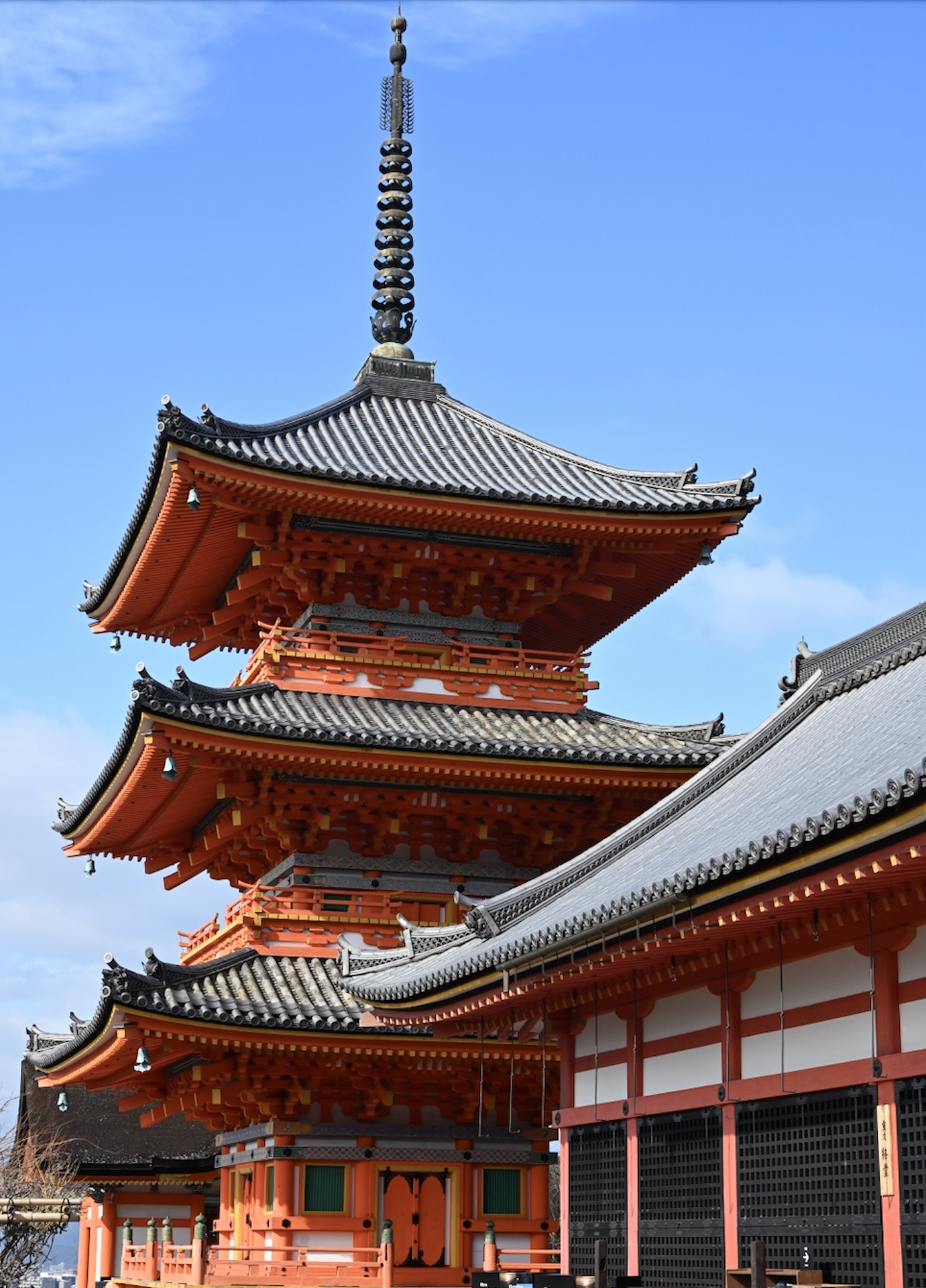
Ponto-chō • 先斗町 • ぽんとちょう
Ponto-chō is a historic and atmospheric neighborhood located in the heart of Kyoto, Japan, nestled along the eastern bank of the Kamo River. Renowned for its traditional machiya architecture, narrow cobblestone streets, and vibrant nightlife, Ponto-chō is a district that exudes charm and sophistication. The area is particularly popular for its traditional tea houses, restaurants, and bar scene.
The main street of Ponto-chō is lined with traditional establishments, offering a variety of Japanese cuisine and cultural experiences. During the cherry blossom season, the riverside becomes a popular spot for hanami (cherry blossom viewing), with illuminated lanterns creating a magical atmosphere.
Ponto-chō is not only a delightful place to explore during the day but also comes alive at night when the lanterns along the streets are lit, casting a warm glow on the historic structures. The neighborhood is a fantastic destination for those seeking an authentic Kyoto experience, steeped in tradition and cultural richness.

Kawaramachi • 河原町 • かわらまち
The Kawaramachi area in central Kyoto is the bustling heart of downtown, renowned for its lively atmosphere and diverse array of attractions. Within this neighborhood, visitors can explore the iconic Nishiki Market, affectionately known as "Kyoto's Kitchen," where they can find an abundance of local delicacies and fresh produce. Next to Nishiki Market is Shijo Street, a bustling thoroughfare lined with department stores, boutiques, and shops offering everything from traditional Japanese handicrafts to modern fashions. Running alongside Kawaramachi, the Kamo River offers a scenic backdrop for strolling, picnicking, or enjoying outdoor activities. The lively atmosphere, variety of dining options, and easy access to public transportation make Kawaramachi a convenient and enjoyable base for exploring Kyoto's diverse offerings.

Fushimi • 伏見区 • ふしみ
Fushimi is a dynamic and historically significant neighborhood located to the south of Kyoto, Japan. One of its most iconic landmarks is the Fushimi Inari Taisha, a Shinto shrine famous for its thousands of vibrant red torii gates that form a winding path up the Inari Mountain. Dedicated to Inari, the Shinto god of rice and prosperity, the shrine is not only a spiritual site but also a popular destination for visitors seeking picturesque views and a memorable hiking experience.
Apart from the Fushimi Inari Taisha, the neighborhood is known for its traditional sake breweries. Fushimi has been a major sake-producing area for centuries, and visitors can explore the sake district to learn about the brewing process, taste different varieties of sake, and purchase local products. The Gekkeikan Okura Sake Museum provides insights into the history of sake production in Fushimi.
The Fushimi Ward also features the Fushimi Castle, also known as Momoyama Castle, which played a crucial role in Japanese history during the Azuchi-Momoyama period. While the original castle itself is no longer standing, the Fushimi Castle Historical Area offers a glimpse into this historical era.
While it may not be as central as some other areas in Kyoto, Fushimi is well-connected by public transportation, making it easily accessible.
Fushimi Sake District Guide >
Things to See & Do in Fushimi >

Arashiyama • 嵐山 • あらしやま
Arashiyama is a scenic and culturally rich neighborhood located on the western outskirts of Kyoto. Known for its natural beauty and historic landmarks, Arashiyama is a popular destination for both locals and tourists alike. One of the most iconic attractions in the area is the Arashiyama Bamboo Grove, where towering bamboo stalks create a mesmerizing and peaceful atmosphere. The nearby Iwatayama Monkey Park provides visitors with the opportunity to interact with wild monkeys while enjoying panoramic views of Kyoto.
During the cherry blossom and autumn seasons, Arashiyama becomes even more captivating, with the vibrant colors adding to the area's allure. With its combination of natural beauty and cultural landmarks, Arashiyama is an excellent neighborhood to visit for those seeking a tranquil yet culturally enriching experience in Kyoto. While it's a bit removed from the city center, it offers a refreshing escape, and there are various accommodations available for those who wish to stay in this picturesque part of Kyoto.
Nishijin • 西陣 • にしじん
Nishijin is a historic and traditional neighborhood located in the northwest part of Kyoto, Japan. Renowned as the city's textile district, Nishijin has been a center for the production of exquisite Kyoto-style kimonos and other woven goods for centuries. The name "Nishijin" itself means "west of the palace," reflecting its proximity to the Kyoto Imperial Palace.
Apart from its textile heritage, Nishijin is dotted with historical temples and shrines, adding to the neighborhood's cultural richness. The Daitoku-ji Temple, a renowned Zen temple complex, and the Kamigamo Shrine, one of Kyoto's oldest Shinto shrines, are notable sites in the vicinity.
While Nishijin may not be as bustling or tourist-centric as some other neighborhoods in Kyoto, it offers a unique and authentic glimpse into Kyoto's traditional industries and cultural heritage.
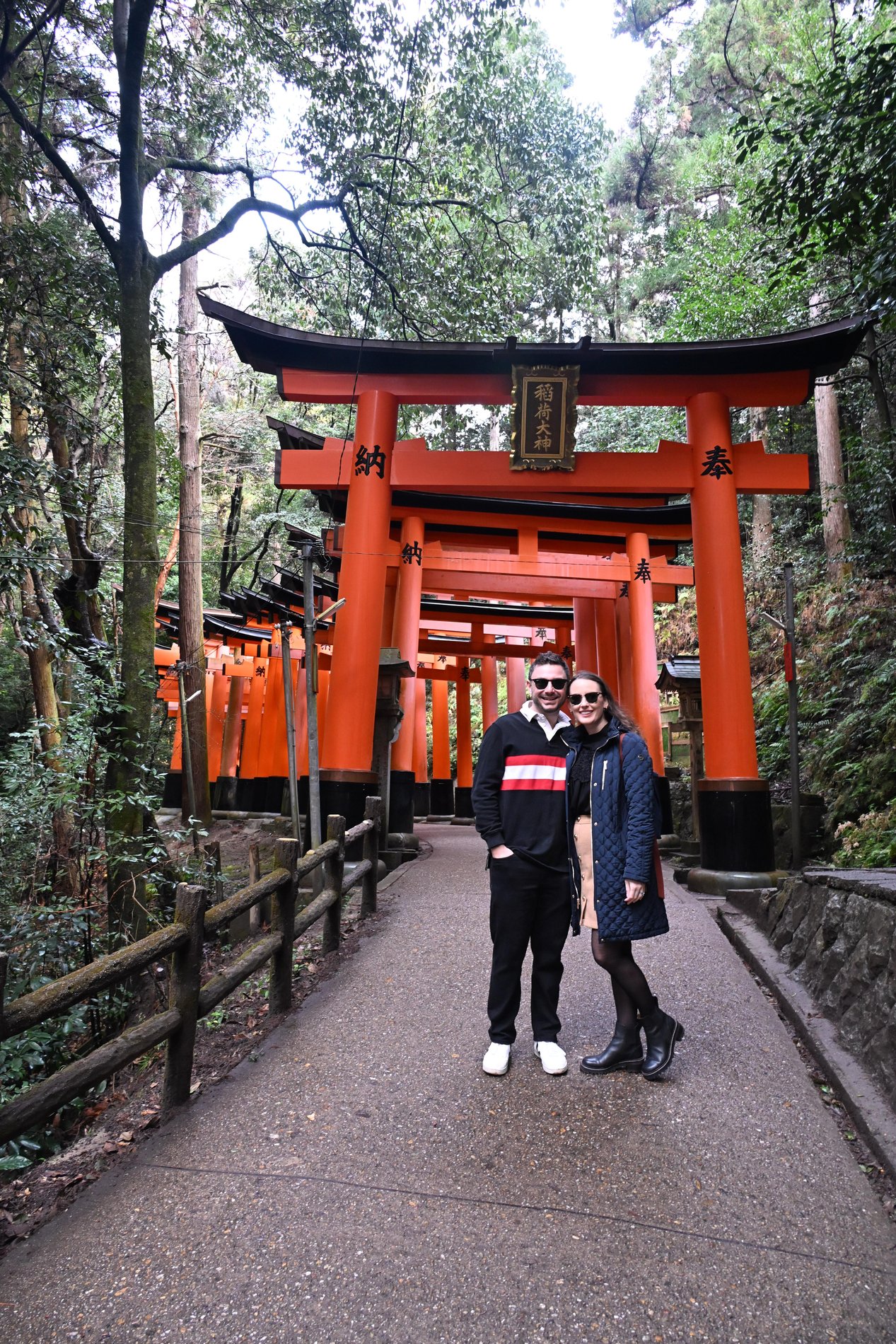
Our take on Kyoto
We spent three nights in Kyoto at The Chapter Kyoto, a Tribute Portfolio Hotel. The hotel was walking distance to Nishiki Market, Ponto-chō, Gion, and tons of restaurant options. Public transportation was easily accessible with a bus stop at the end of the block and the subway only a 5-minute walk away. The hotel also had an in-house onsen (hot spring) which was such a treat after long days of sightseeing and some dreary, rainy weather. We loved the seamless blend of traditional Japanese inn (ryokans) elements with modern design and comfort at our hotel. From the soothing in-house onsen to the cozy tatami mat floor in our room, every detail added to our unforgettable stay in Kyoto.
Spending three nights in Kyoto was not nearly enough time to accomplish all we wanted to see and do, but it was enough time to see the highlights. We took a day trip to Nara during our stay in Kyoto which we could not recommend enough. The rain put a bit of a damper on our plans in Kyoto, but we still had a blast exploring Kyoto's shops and trying out the incredible cuisine Kyoto had to offer.
Looking for more Kyoto content?
Check out the Jetset Seeker Blog!
Popular Day-Trips
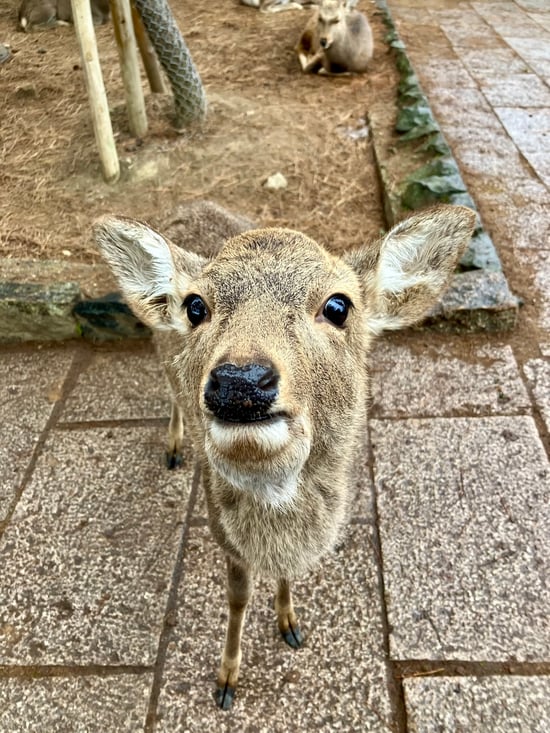
Nara
See the Bowing Deer

Osaka
Visit the "Nation's Kitchen"
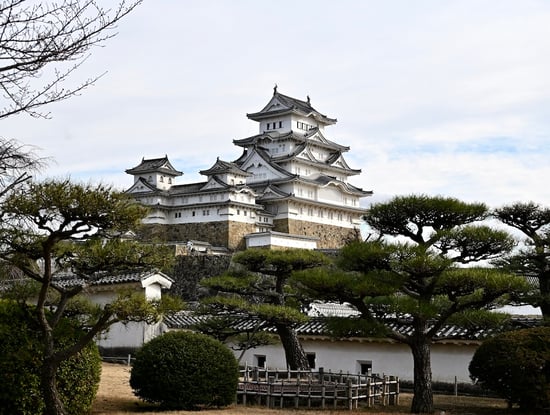
Himeji
The Iconic Himeji Castle
Perks of traveling with groovy
Secure luggage
Lorem ipsum dolor sit amet consectetur adipiscing elit litora maecenas, nisl primis turpis dapibus imperdiet nibh dui sem.
Visa tramits
Lorem ipsum dolor sit amet consectetur adipiscing elit litora maecenas, nisl primis turpis dapibus imperdiet nibh dui sem.
Airfare & transportation
Lorem ipsum dolor sit amet consectetur adipiscing elit litora maecenas, nisl primis turpis dapibus imperdiet nibh dui sem.
Smart locator
Lorem ipsum dolor sit amet consectetur adipiscing elit litora maecenas, nisl primis turpis dapibus imperdiet nibh dui sem.
What other honeymooners say


Laboris nisi ut aliquip ex ea commodo consequat. Duis aute irure dolor in reprehenderit in voluptate velit esse cillum dolore eu fugiat nulla pariatur. Excepteur sint occaecat cupidatat non proident, sunt in culpa qui officia deserunt mollit anim id est laborum.”

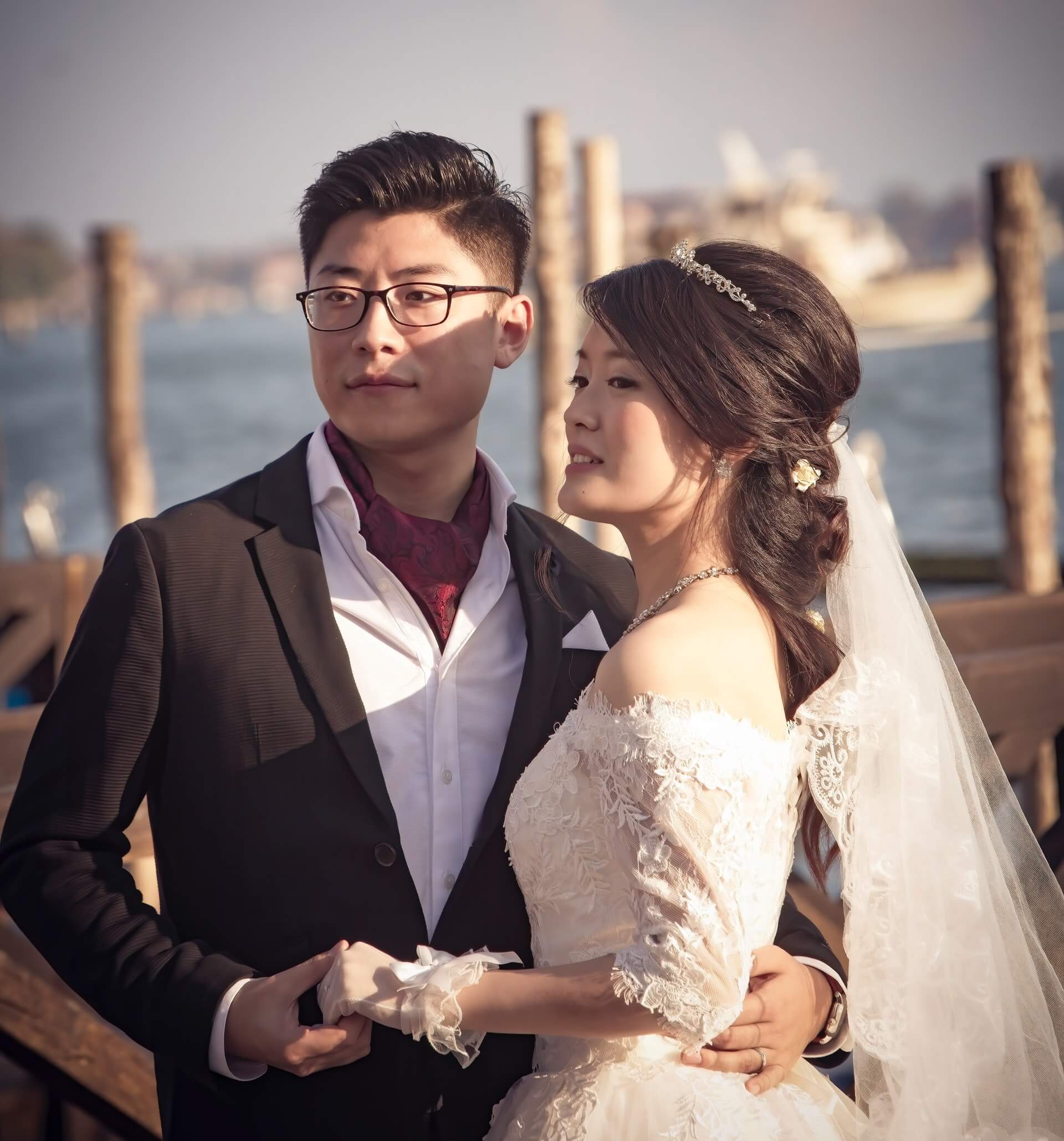
Laboris nisi ut aliquip ex ea commodo consequat. Duis aute irure dolor in reprehenderit in voluptate velit esse cillum dolore eu fugiat nulla pariatur. Excepteur sint occaecat cupidatat non proident, sunt in culpa qui officia deserunt mollit anim id est laborum.”

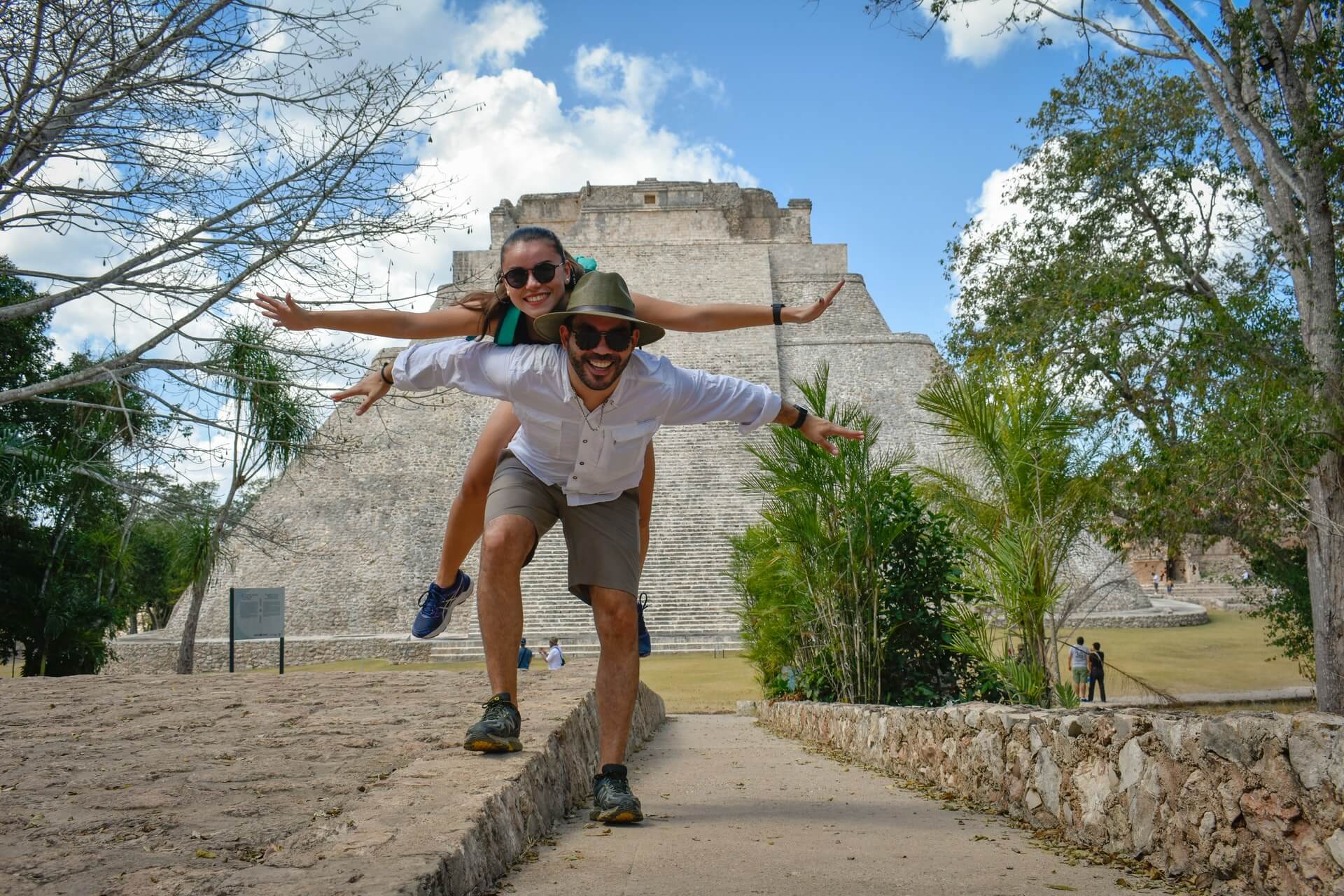
Laboris nisi ut aliquip ex ea commodo consequat. Duis aute irure dolor in reprehenderit in voluptate velit esse cillum dolore eu fugiat nulla pariatur. Excepteur sint occaecat cupidatat non proident, sunt in culpa qui officia deserunt mollit anim id est laborum.”
Kyoto Itineraries


Our Kyoto Travel Guide & Trip Planning Resources
Curious about the resources that shaped our Kyoto trip? Dive into the links below for additional insights and valuable information we used to plan our own unforgettable trip.
Remember:
- Lonely Planet Japan 17th Edition (2022) >
- TripAdvisor Things to Do in Kyoto >
- Kyoto City Official Guide >
Looking for more information on Japan? From booking Shinkansen tickets, to general etiquette, popular souvenirs, and more, check out our Japan Travel Guide.
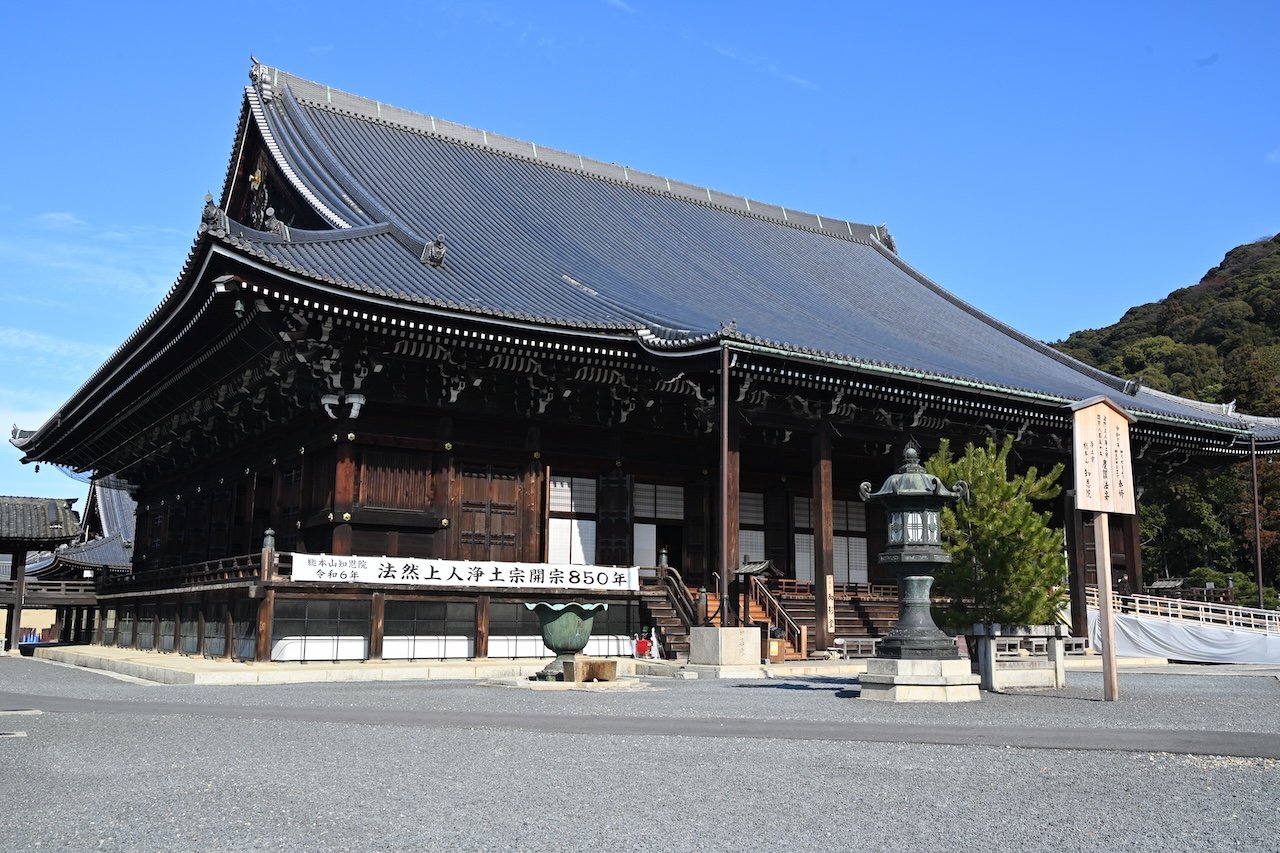
Ready for the experience of a lifetime?
As passionate travelers, we're dedicated to sharing our insights to help you craft the trip of a lifetime. If you're seeking specific information regarding one of the above listed destinations or interested in personalized itineraries and trip planning, reach out to us. Let's turn your travel dreams into unforgettable realities.
%20(1).png?width=3690&height=2079&name=Jetset%20Seeker%20Logo%20(Banner)%20(1).png)

